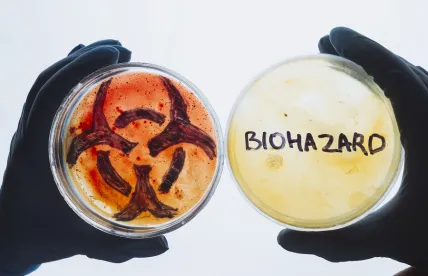Whole genome sequencing (WGS) determines the order of all of the DNA building blocks (nucleotides) in an organism’s entire genome in a single laboratory process. A comparison of the DNA sequence of an isolated bacterial pathogen to the sequences from other samples in a DNA database can pinpoint the source of a foodborne disease outbreak. The analytical tools for WGS have become increasingly accurate, easy, and affordable such that health agencies have moved to WGS as the preferred tool for investigating foodborne illnesses from Listeria, Salmonella, and pathogenic strains of Escherichia coli, including E. coli O157:H7.
As reported here, the United States Department of Agriculture’s (USDA) Food Safety and Inspection Service (FSIS) held a meeting to discuss the state of the art and FSIS’s plans for collecting and analyzing WGS data for bacteria isolated from official samples. For fiscal year 2017, all bacterial pathogens isolated under FSIS testing programs have been analyzed in parallel using both pulsed-field gel electrophoresis (PFGE) analysis and WGS. A FSIS Constituent Update (December 14, 2018)announces that FSIS will suspend routine PFGE analysis and transition to using only WGS for Shiga toxin-producing E. coli (STEC), effecting January 15, 2019, and for Salmonella isolates, effective March 15, 2019.
FSIS inspects almost 6,500 establishments daily and collects a very large volume of microbial samples on a routine basis. Under the FSIS Microbial Testing Program for Ready-To-Eat (RTE) Meat and Poultry in 2017, for example, FSIS collected and analyzed 6,892 RTE food samples for Salmonella and Listeria monocytogenes (Lm) and analyzed 4,614 samples from food-contact surfaces for Lm. As the technology expands, WSG will become an increasingly valuable tool for quickly tracing diseases to their source and perhaps someday identifying pathogens in the environment early enough to prevent contamination of food altogether.



 />i
/>i

